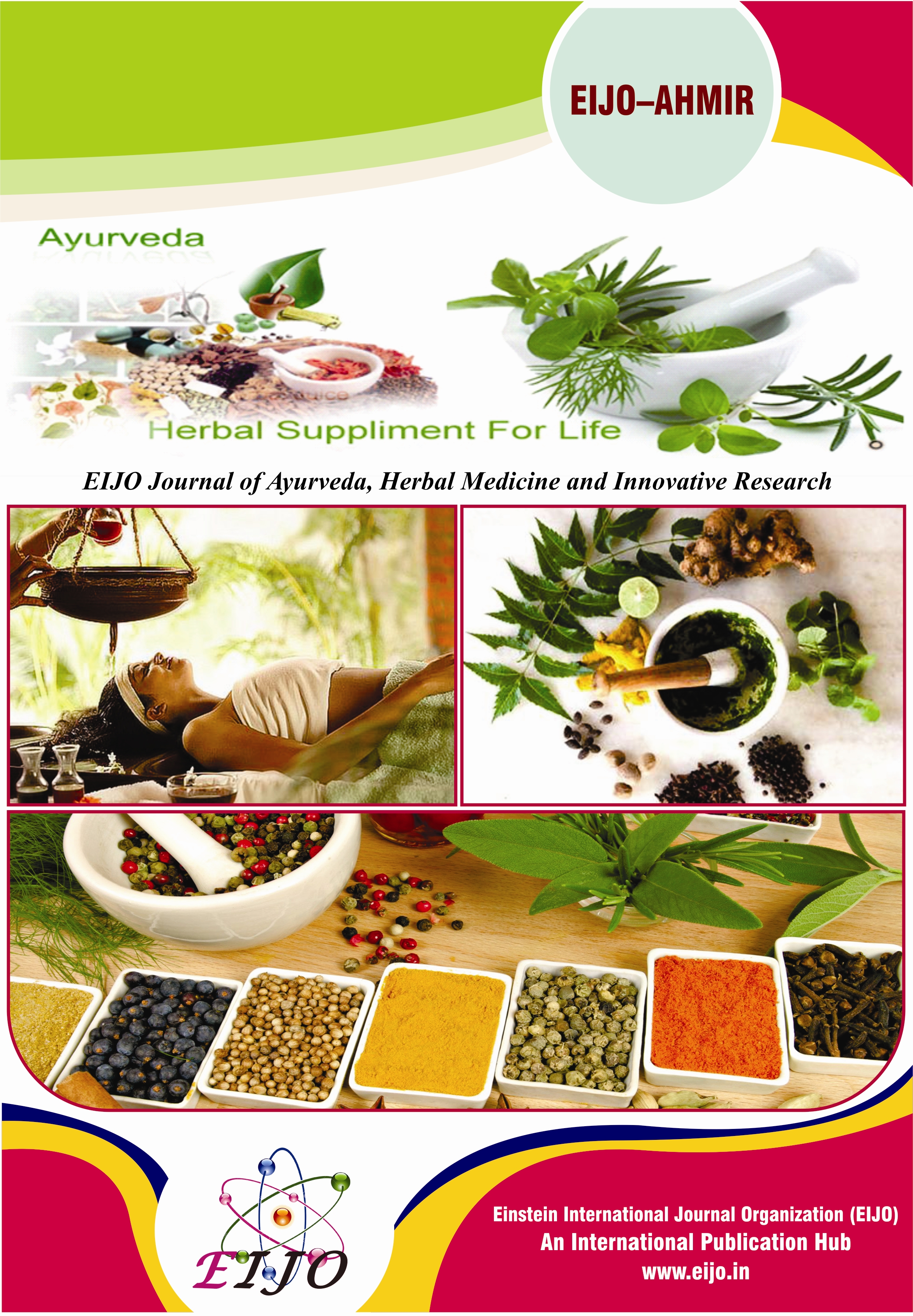Author Desk
Our Journals
JOURNALS || EIJO Journal of Ayurveda, Herbal Medicine and Innovative Research (EIJO – AHMIR) [ ISSN : 2456 - 530X ]
Article Overview
Introduction: Pratishyaya (Allergic Rhinitis) is a commonly encountered symptom when it comes to pediatric clinical practice. The prevalence of allergic diseases including Rhinitis, Allergies are rising worldwide affecting about 10-20% of the population. Allergic rhinitis is an IgE-mediated disorder triggered by exposure of nasal mucosa to allergens, leading to rhinorrhea, itching, and sneezing as well as sleep disturbance in Children. Prolonged delaying of treatment leads to asthma and loss of smell and taste sensation.
Aims and Objective: The present work aims at the efficient management of Pratishyaya (Allergic Rhinitis) through Shamanaoushadas in the ayurveda treatment protocol
Materials and methodology: The Ayurvedic correlation and treatment principles were adapted from the texts such as Arka Prakasha, Susruta Samhita, Ashtanga hridaya, Sahasrayogam, Kashyapa Samhita, Sharangadhara samhita, Bhaishajya ratnavali, etc. The published evidence in the form of articles, and dissertation works was thoroughly screened, and information was gathered and well-reflected.
Discussion: Pratishyaya or Allergic rhinitis is one of the most common ailments seen in school-going children & the prevalence rate is high in developing countries leading to the intake of steroidal medication further leads to certain complications, These shamanaoushadis contains anti-allergic, anti-microbial, anti-oxidant and anti-inflammatory properties, also according to classics they contain properties that are Vishahara, Dipana-pachana, tridhoshagna in nature. Environmental factors such as dust & smoke pollution results in ignition toward a high prevalence rate thereby making allergic rhinitis a major burning issue in current society.
Conclusion: Shamanaoushadis is much more applicable than shodhana oushadis in children. They are cost-effective, much more palatable, and can be easily administered to children. Further study of these formulations helps to perceive limitations and their efficacy in children.
Need for the study: Daily use of shodhana therapy is difficult to be administered in children, therefore the relevance of shamanaoushadis is much higher. Even though there are many articles on single combination drugs, but it’s difficult to cure children by simply administering on practical level. As different acharys have mentioned formulations that can be used practically and that are easily available, combinations of shamanaoushadis are much more relevant in daily practice.
Result: Shamanaoushadis could be used in both acute & chronic stages of Pratishyaya (Allergic Rhinitis). Dooshivisha is one of the main pathological facfactorsr the manifestation of Prtishyaya (Allergic Rhinitis). Use The use these combinations oformulationson easily reduces the symptoms.
Keywords: Pratishyaya (Allergic Rhinitis), Samana Aushadhis.
Reference



